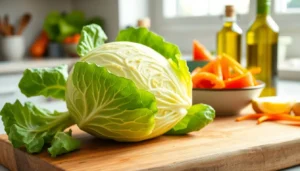Table of Contents
ToggleFluffy, golden pancakes are a breakfast staple, but what happens when gluten crashes the party? For those avoiding gluten, the quest for the perfect pancake can feel like searching for a needle in a haystack. Fear not! Gluten-free pancakes are here to save the day, proving that deliciousness knows no dietary bounds.
Overview Of Gluten-Free Pancakes
Gluten-free pancakes provide a safe and enjoyable option for individuals with gluten sensitivities or celiac disease. Various ingredients replace traditional flour, allowing for versatile and delicious recipes. Common alternatives include almond flour, coconut flour, and oat flour, each offering unique flavors and textures.
Almond flour creates a nutty taste, while coconut flour absorbs moisture, making it necessary to adjust liquid ratios. Oat flour, derived from gluten-free oats, delivers a soft, hearty pancake. Many gluten-free pancake recipes combine these flours to enhance taste and improve texture.
Preparation combines dry and wet ingredients, ensuring equal distribution for optimal consistency. Techniques like using baking powder create fluffiness, enhancing overall mouthfeel. When making gluten-free pancakes, resting the batter for five to ten minutes allows it to thicken, improving texture.
Various toppings complement gluten-free pancakes, catering to different preferences. Fresh fruits such as blueberries or strawberries add natural sweetness. Maple syrup, honey, or agave nectar provides additional flavor, while whipped cream or yogurt lends creaminess.
Including protein sources elevates the nutritional value of gluten-free pancakes. Adding ingredients like eggs or Greek yogurt improves texture and boosts protein content. This approach makes pancakes more filling and satisfying.
Lastly, gluten-free pancakes maintain versatility for different occasions. They serve as a breakfast staple, a brunch item, or a dessert option. Experimentation with flavors, such as cinnamon or vanilla, keeps recipes exciting and caters to diverse tastes.
Ingredients For Gluten-Free Pancakes
Gluten-free pancakes require specific ingredients for the best taste and texture. Common alternatives exist, along with essential components that enhance the overall experience.
Common Gluten-Free Flours
Almond flour, a popular choice, adds a nutty flavor and moist texture. Coconut flour absorbs more liquid, so adjustments in the recipe are often necessary. Oat flour provides a wholesome taste that’s ideal for fluffy pancakes. Rice flour delivers a mild flavor and smooth consistency. These flours work well together, creating a balanced blend suitable for various preferences.
Other Essential Ingredients
Baking powder is crucial for achieving fluffy pancakes, helping the batter rise effectively. Eggs act as binding agents, contributing structure and moisture. Milk, whether dairy or non-dairy, adds liquid while enhancing taste. Honey or maple syrup serves as natural sweeteners, providing flavor and moisture. Finally, a pinch of salt enhances the overall taste, rounding out the ingredients for delicious gluten-free pancakes.
Popular Gluten-Free Pancake Recipes
Gluten-free pancakes offer delicious flavors and textures, making them a popular choice for many. Below are a couple of beloved recipes that stand out.
Classic Gluten-Free Pancakes
Classic gluten-free pancakes use a blend of almond and oat flour for a light and fluffy texture. The ingredients include 1 cup almond flour, 1 cup oat flour, 1 tsp baking powder, 2 eggs, and 1 cup milk. Mixing dry and wet ingredients separately ensures the batter combines evenly. After mixing, let the batter rest for 10 minutes to enhance the texture. Pour the batter onto a heated griddle, cooking until bubbles form, then flip and cook until golden brown. Enjoy these pancakes with maple syrup or fresh berries for an optimal breakfast experience.
Chocolate Chip Gluten-Free Pancakes
Chocolate chip gluten-free pancakes bring sweetness to the breakfast table. A combination of 1 cup gluten-free flour, 1 cup milk, and ½ cup chocolate chips creates a delightful treat. Incorporating 2 eggs and 1 tbsp vanilla extract elevates the flavor profile. Mixing the ingredients separately helps achieve the right consistency. Let the prepared batter rest briefly. Pour onto a preheated skillet and sprinkle in chocolate chips while cooking. Serve with whipped cream or sliced bananas for an indulgent twist that satisfies any sweet tooth.
Tips For Making Perfect Gluten-Free Pancakes
Creating perfect gluten-free pancakes requires attention to detail, especially in mixing and cooking techniques.
Mixing Techniques
Start by whisking dry ingredients thoroughly. Blending almond, coconut, or oat flour ensures a more uniform batter. Combine wet ingredients in a separate bowl for a smoother mix. Gradually add the wet mixture to the dry mixture to avoid lumps. Achieving the right consistency matters; it should be pourable but not overly runny. Incorporate baking powder evenly for fluffiness. Rest the batter for at least 10 minutes, allowing it to thicken and enhance texture. Using room-temperature eggs improves binding, helping pancakes rise as they cook.
Cooking Tips
Preheat the pan on medium heat for consistent cooking. Using a non-stick skillet minimizes sticking and promotes even browning. Grease the pan with a small amount of oil or butter before pouring the batter. Pour 1/4 cup of batter for each pancake, giving them space to expand. Cooking time varies; flip pancakes when bubbles form and edges look set. Cook until golden brown on both sides for the best flavor. Keep finished pancakes warm in a low oven while preparing additional batches. Serve with toppings like fresh fruits, honey, or maple syrup to enhance the meal.
Nutritional Benefits Of Gluten-Free Pancakes
Gluten-free pancakes offer several nutritional advantages that support a balanced diet. They commonly include alternative flours such as almond, coconut, or oat flour, which provide unique nutrients. Almond flour, for instance, supplies healthy fats, protein, and vitamin E, promoting overall health.
Coconut flour is rich in fiber, aiding digestion and promoting satiety. Oat flour, on the other hand, contains antioxidants and may contribute to heart health. Many gluten-free pancakes also utilize eggs, a source of high-quality protein that aids muscle repair and growth.
Adding Greek yogurt to the pancake batter enhances protein content significantly, making the meal more filling and beneficial for muscle recovery. Incorporating natural sweeteners, like honey or maple syrup, provides minerals and antioxidants, enhancing both flavor and nutritional value.
Fiber content increases when using gluten-free options. Higher fiber levels help regulate blood sugar and enhance digestive health. Essential vitamins and minerals often come from toppings like fresh fruits, which can add additional nutrients such as vitamin C, potassium, and antioxidants.
Choosing gluten-free pancakes can fit well into various dietary preferences, appealing to those avoiding gluten or searching for a healthier breakfast alternative. The diverse ingredients and toppings open avenues for creative nutritional combinations. Preparing gluten-free pancakes allows individuals to enjoy a delicious meal while benefiting from their unique nutrients.
Gluten-free pancakes offer a delightful solution for those with dietary restrictions. With a variety of flour alternatives available each bringing unique flavors and textures it’s easy to create a satisfying meal. The preparation techniques discussed ensure that these pancakes can be just as fluffy and delicious as traditional versions.
Experimenting with different ingredients and toppings can elevate the experience making breakfast or brunch enjoyable for everyone. Whether it’s a classic recipe or an indulgent chocolate chip version there’s a gluten-free pancake option to suit every palate. Embracing these alternatives not only satisfies cravings but also provides nutritional benefits making gluten-free pancakes a smart choice for any meal.




